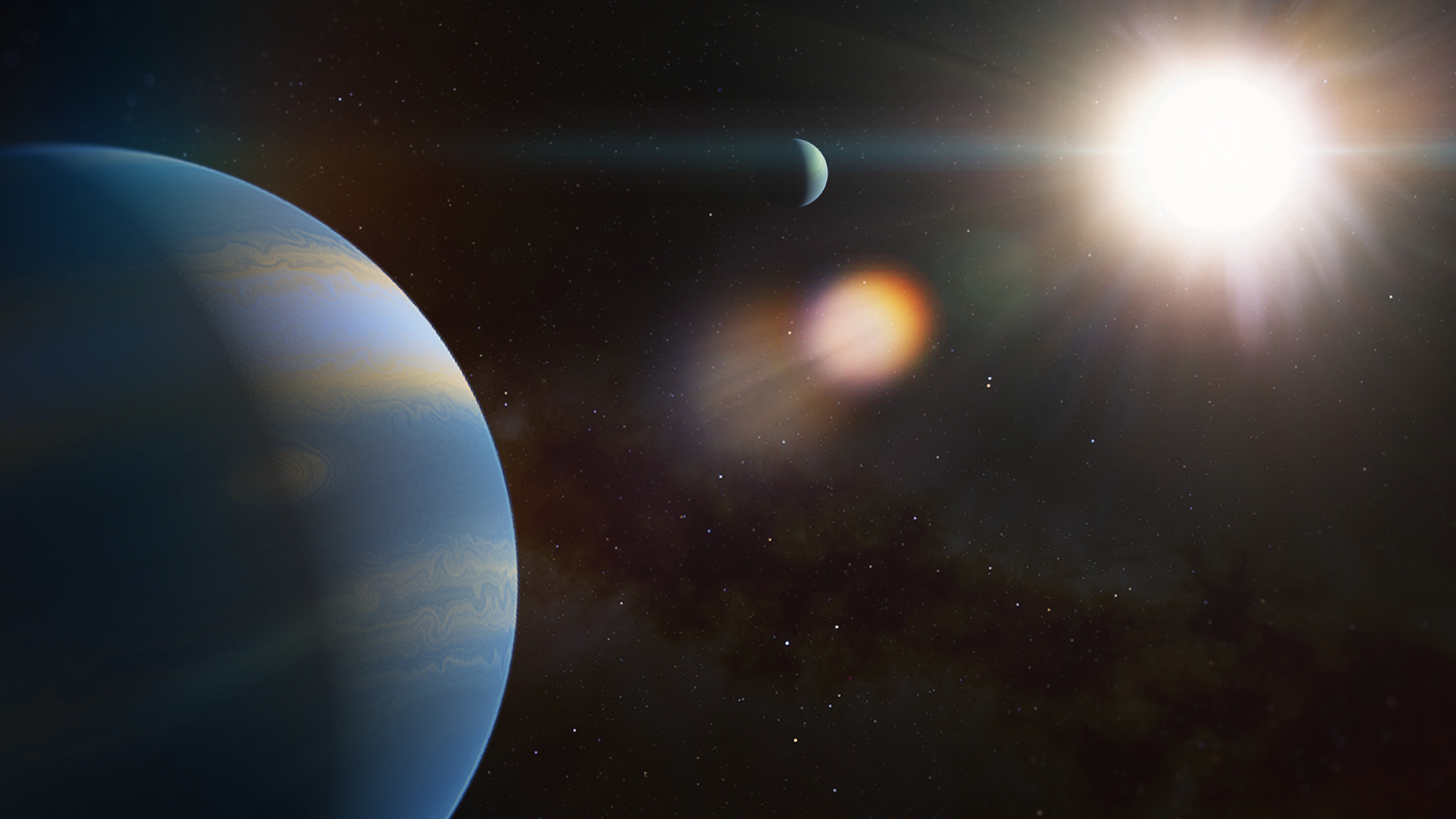
Astronomers have discovered not one but two planetary systems with sun-like stars at their hearts.
Both of these systems contain mini-Neptune planets and one harbors a huge "super-Jupiter" world, all of which are many times more massive than Earth. Studying the realms could lead to a better understanding of how planets form and evolve around sun-like stars — also known as "solar analogs."
The discovery of the two systems was made using NASA's Transiting Exoplanet Survey Satellite (TESS) and the 1.93 meter telescope at the Observatoire de Haute-Provence (OHP) in southern France. The OHP telescope has pedigree when it comes to detecting extrasolar planets, or "exoplanets." It is the instrument that astronomers Michel Mayor and Didier Queloz used to discover 51 Pegasi b in 1995, the first exoplanet discovered orbiting a sun-like star.
These two newly discovered systems are home to at least three exoplanets, designated TOI-1736 b, TOI-1736 c, and TOI-2141 b, each of which join an exoplanet catalog that has grown to contain over 5,500 entries since the mid-1990s.
"We report the detection and characterization of two planetary systems around the solar analogs TOI-1736 and TOI-2141 using TESS photometry data and spectroscopic data obtained with the SOPHIE instrument on the 1.93 m telescope at the OHP," Institut d’astrophysique de Paris scientist and research lead author Guillaume Hébrard wrote with his co-authors in a paper published in the journal Astronomy& Astrophysics. "We performed a detailed spectroscopic analysis of these systems to obtain the precise radial velocities and physical properties of their host stars."
Related: NASA identifies 17 exoplanets with possible subsurface oceans
TOI-2141: A planetary system around an old star
The first planetary system discovered by Hébrard and colleagues is TOI-2141, located around 250 light-years from Earth and centered around a star that is comparable in size to the sun but appears to be older than our star. We know this because TOI-2141's star exhibits a lack of chemical elements heavier than hydrogen and helium, which are known as "metals." By contrast, our 4.6-billion-year-old sun is very enriched in such metals. With some calculations, the team realized the metal ratio suggests the newly studied star is around 7.5 billion years old.
The planet in this system, TOI-2141 b, was spotted as it crossed, or 'transited," the face of its parent star, blocking some of the light coming from the star and therefore causing the star to dim from the telescope's vintage point. The team was able to determine that this planet is around three times as wide as Earth, with a mass around 24 times that of our planet, making it a mini-Neptune exoplanet.
TOI-2141 b is located at a distance of around 12 million miles from its star, which is approximately 13% of the distance between Earth and the sun. This means the mini-Neptune completes an orbit roughly once every 18.3 Earth days, with this proximity also sending its temperature to around 840 degrees Fahrenheit (450 degrees Celsius).
The density of this planet and its hot surface temperature indicate it consists of a rocky core surrounded by an atmosphere filled with water vapor. Thus far, TOI-2141 b is the only planet found in the TOI-2141 system, but the team hasn't yet ruled out the possibility that other smaller planets orbit the sun-like star.
And, as impressive as this first system is, the second planetary system discovered by the team is something a little more unique.
The exotic TOI-1736
Located around 290 light-years from Earth, TOI-1736 is somewhat more exotic than TOI-2141. At first glance, its primary star is unremarkable, being approximately the same age as the sun, around 4.9 billion years old, around the same size as the sun, just 15% larger than our star, and even around the same temperature.
However, the TOI-1736 system is extraordinary because its main star has a second, smaller companion star, making this a binary system.
Massive stars are commonly found in binary systems, but this double-lifestyle is rarer for stars the size of the sun, with only around 44% of solar analogs found with a companion. What is even stranger is TOI-1736's companion star is so distant from the main star that the exoplanets the team found actually only orbit the system's main star.
More specifically, Hébrard and colleagues found two planets in this exotic star system. The first is another mini-Neptune with a width about 2.5 times that of Earth and a mass 13 times larger than our planet's. This planet, TOI-1736 b, orbits its star at a distance of just 6.5 million miles, which is around 7% the distance between Earth and the sun, and completes an orbit in around 7.1 Earth days. The proximity of TOI-1736 b to its star means it has a temperature of around 1,500 degrees Fahrenheit (800 degrees Celsius).
The second planet of the system, TOI-1736 c, is a so-called "super-Jupiter" with a mass around 2,800 times that of Earth and a width around 9 times that of Jupiter, making it a stunning 99 times wider than Earth.
TOI-1736 c is located around 128 million miles from its star, which is about 1.3 times the distance between Earth and the sun, meaning that it completes an orbit roughly once every 570 Earth days. This distance also puts the planet in the habitable zone of its parent star — the distance at which water can exist in a liquid state. TOI-1736 c is a gas giant, so it lacks a solid surface, but it could have moons with atmospheres that allow liquid water to exist at their surface s — perhaps making them habitable?
The answers to such questions will come in time; meanwhile, the team is focused on some signs of a third planet that seems to liev around TOI-1736. Soon, they intend to investigate this clue with the SOPHIE spectrograph at the OHP.







